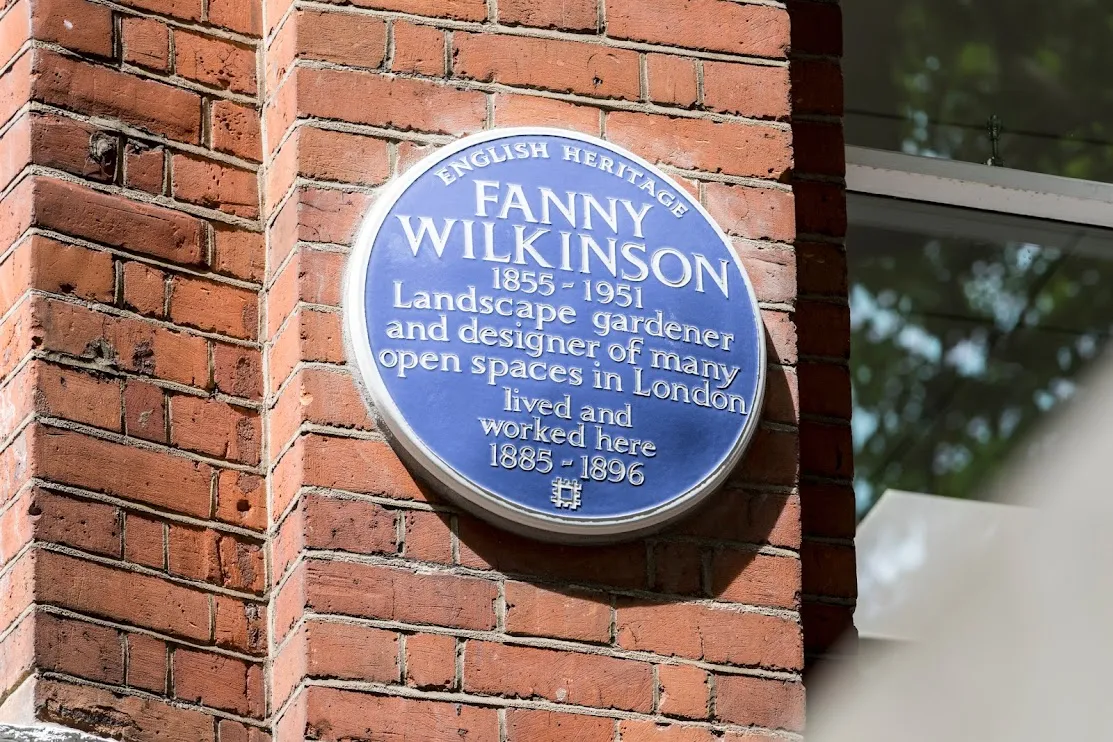There are many incredible women who have made an impact on how we garden and the design of our gardens now. So for International Women's Day we've listed some of the key, female garden designers in British history that influence the way we garden today.
These names are a mixture of greats from our time and greats from history, they are women who are pioneers in garden design.
Gertrude Jekyll (1843-1932)

No garden designer has had more enduring influence on the British garden than Gertrude Jekyll. For a century her painterly way of grouping plants in large, informal masses of colour; her insistence on harmony and rhythm; and her embrace of formal structure softened with loose, richly textured planting, has been the sine qua non of the successful British garden. Gardens were considered a series of carefully made pictures; and only really in the last decade has colour been supplanted as the guiding principle of design. Her former home in Surrey, Munstead Wood, was acquired by the National Trust in 2023.
Discover more about the life of Gertrude Jekyll
Fanny Wilkinson (1855-1951)

Fanny Wilkinson was responsible for the original layouts of some 75 parks and green spaces in London, many of which, such as Vauxhall Park, still exist today. She was the first woman to attempt to enrol on an 18-month course at the Crystal Palace School of Landscape Gardening and Practical Horticulture, and forged a very successful career over the next 20 years. In 2022, English Heritage honoured her with blue plaques outside her former homes in Bloomsbury, London and at Middlethorpe Hall in York.
Read more about Fanny Wilkinson
Norah Lindsay (1866-1948)
A major influence in the interwar years, Norah developed a rich, romantic, ‘untidy’ style that encouraged serendipity and self-seeding, wonderfully realised at her garden at Sutton Courtenay. In the 1920s, penniless but well connected, she began a glittering career as a High Society garden designer. Today she is best known for her long collaboration with Lawrence Johnston at Hidcote.
Phyllis Reiss (1886-1961)
When Phyllis Reiss moved to Tintinhull in 1933, she set about creating a garden of rooms within the Hamstone walls: tranquil enclosures unified by repeated plantings of silver, bronze and burgundy foliage and rhythmic topiary. Her unfussy elegance and year-round planting was to influence designers from Lanning Roper to Sylvia Crowe, and not least her successor at Tintinhull, Penelope Hobhouse.
Margery Fish (1892-1969)

Our current fascination for perennials, and especially our continuing love-affair with the cottage garden, can be traced back to Margery Fish, whose approachable, funny and commonsensical books championed a more simple and informal planting style. She was an early fan of silver foliage, and introduced the concept of ground cover as a labour-saving device. Read more about her snowdrop collection at East Lambrook Manor.
Vita Sackville-West (1892-1962)

In 1930, the writer Vita Sackville-West and her diplomat husband Harold Nicolson bought an old farm in Kent and set about creating a garden that has become one of the best loved and most visited in the world. Vita would have insisted it was Harold who was the designer at now iconic Sissinghurst Castle – certainly in terms of its ground plan of rooms. But her exuberant, multi-layered planting style and her colour-themed gardens, especially her celebrated White Garden, have probably spawned more imitators in more countries than any designer, before or since.
Read about how head gardener Troy Scott Smith is honouring Vita's legacy at Sissinghurst
Brenda Colvin (1897-1981)
In 1947, Brenda published Land and Landscape – an influential work on landscape in the 20th century, reflecting her commitment to an ecological approach and to simple planting. While loving her own garden, Little Peacocks, Brenda famously rejected private garden design as too subject to the whims and fancies of owners, turning to more durable projects such as power stations, reservoirs and town planning.
Sylvia Crowe (1901-1997)
Sylvia Crowe was the pre-eminent landscape architect in post-war Britain and the author of a host of standard texts on landscaping, design and forestry. Her Garden Design (1958) is cited by many designers as a seminal text. Sylvia worked on Harlow and Basildon new towns, created Rutland Water, merged hated power stations and commercial forestry into the landscape – but never entirely abandoned gardens.
Rosemary Verey (1918-2001)

Rosemary came to epitomise Country House style, at its zenith in the 1980s, which she marketed with particular success in USA – all yew hedges, knots, fulsome pastel borders, discreet classical statuary and immaculate maintenance. She had a gift for striking set pieces – her laburnum tunnel at her home, Barnsley house, and above all her supremely photogenic potager, inspired by Villandry, were copied the world over.
Penelope Hobhouse b. 1929

At 38, Penelope Hobhouse was turned down by the landscape architecture course at Leeds, on the grounds that she was too old to make a meaningful career. Crestfallen, she went home and wrote a book – the first of many that were to provide inspiration to gardeners. In 1980 she took on the National Trust garden at Tintinhull in Somerset (now the Newt in Somerset) which proved a stepping stone to a stellar international career in garden design.
Discover Penelope Hobhouse's design principles.